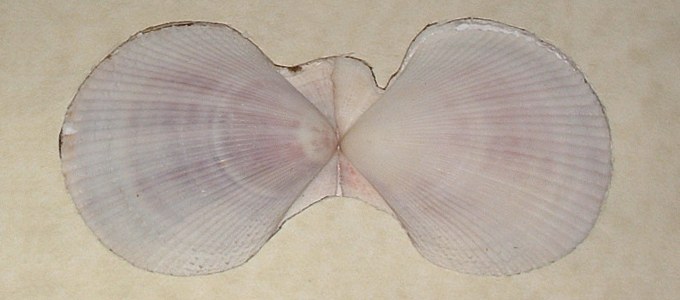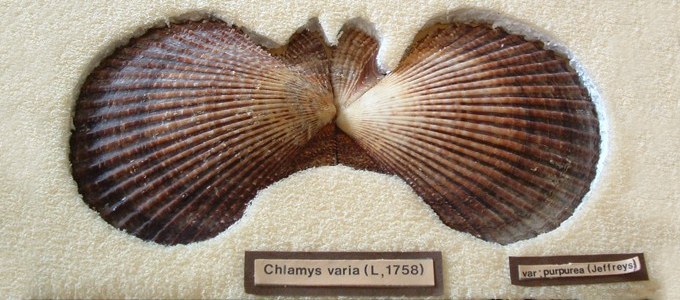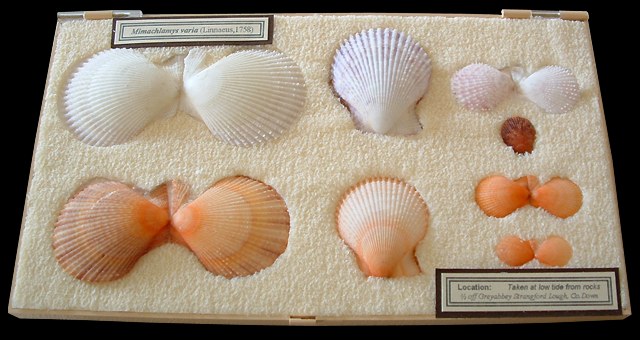SOME SHELLS FROM NORTHERN IRELAND
I had first thought (and writen!) that specimens with orange, yellow, white etc. colorations were much more uncommon and often presented traces of attacks,at least in Quiberon bay, as if there were a relationship between colours and attacks.
Mr S. Francis corrected this odd feeling, with some comments and pictures about the specimens he fished in Strangford Lough, a marvelous area east of Belfast.
"The percentage of coloured (white, lavender & orange) seems to be quite hight in this area. I have seldom noticed foreign matter encroachment into the shell walls. Furthermore, I have just examined all the coloured specimens in my own collection and there is no signs of damage or attack."
Variations in shape:
"Where I have found an odd specimen which a small stone inside the shell, the shell had developed a 'thick lip' what I have called a pyxoideus form, as it is similar in shape to Flexopecten flexuosus var. pyxoideus described by Locard. I have also found a double shell on occasion similar to Flexopecten flexuosus var. duplicatus also described by Locard. This last form I feel certain was caused by a period of food starvation."
Mr S. Francis corrected this odd feeling, with some comments and pictures about the specimens he fished in Strangford Lough, a marvelous area east of Belfast.
"The percentage of coloured (white, lavender & orange) seems to be quite hight in this area. I have seldom noticed foreign matter encroachment into the shell walls. Furthermore, I have just examined all the coloured specimens in my own collection and there is no signs of damage or attack."
Variations in shape:
"Where I have found an odd specimen which a small stone inside the shell, the shell had developed a 'thick lip' what I have called a pyxoideus form, as it is similar in shape to Flexopecten flexuosus var. pyxoideus described by Locard. I have also found a double shell on occasion similar to Flexopecten flexuosus var. duplicatus also described by Locard. This last form I feel certain was caused by a period of food starvation."
M. varia "duplicata"
" It is a very interesting subject, I have a feeling that it is more related to salt content in that area.
Mimachlamys nivea, which has now been shown by Jan Light to be a geographic subspecies of varia, is always found near where a fresh water stream is flowing into the sea. The salt content is lower, and the shells are usually pure white, or white/lavender."
Mimachlamys nivea, which has now been shown by Jan Light to be a geographic subspecies of varia, is always found near where a fresh water stream is flowing into the sea. The salt content is lower, and the shells are usually pure white, or white/lavender."


Colour varieties in Strangford Lough
